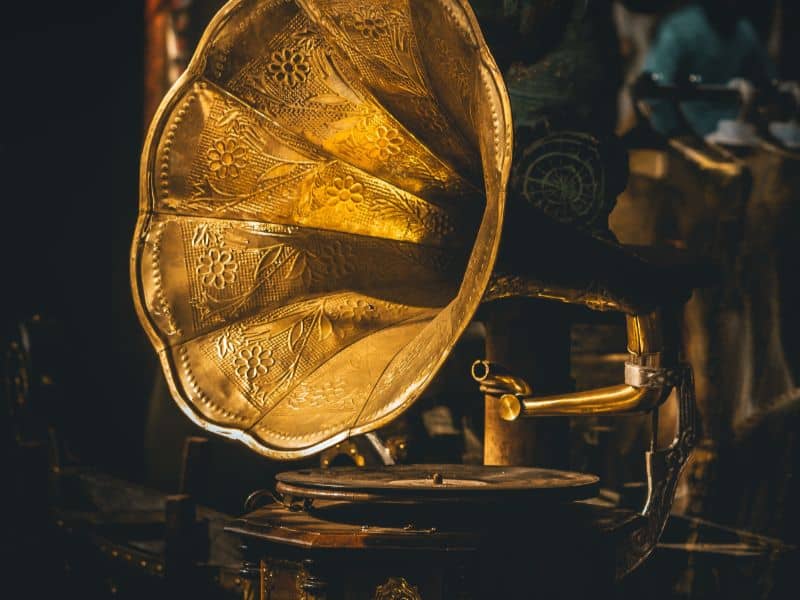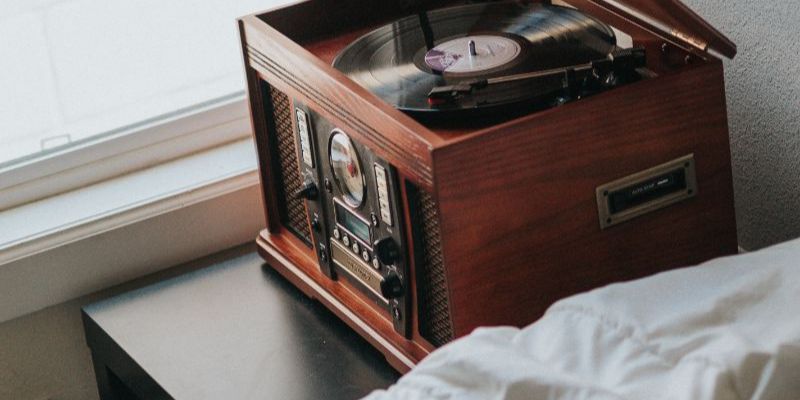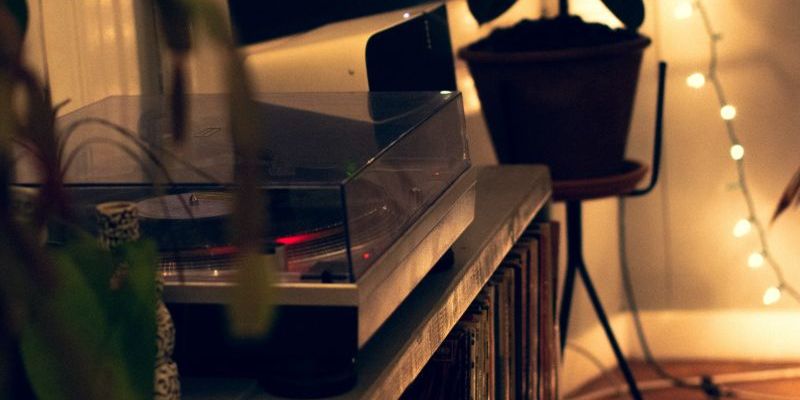1857: Good vibrations
The record player that sits on proud display at the centre of your music collection has somewhat surprising roots – or perhaps not; the earliest example was modelled on the human ear. However, when the French printer and bookseller invented the phonautograph (I can’t imagine why that name didn’t catch on!), Edouard-Leon Scott de Martinville in 1857 didn’t record sound and played it back. Instead, it used a needle to transcribe the soundwaves onto paper. To replicate the ear’s internal workings in mechanical form, Scott de Martinville used a horn to capture sound and elastic to reproduce the tympanic membrane found in the eardrum. Pretty cool: Thomas Edison thought so.
1877: Enter Edison
Scott de Martinville’s invention enthralled Thomas Edison, and he had a clear vision for what would become the precursor for the turntable. Edison’s original 1877 design consisted of a cylinder wrapped in tin foil and operated by hand crank – a feat for which we’re sure he deserved his Blue Peter badge! When sound entered the mouthpiece, the concept was simple; the vibration produced caused a needle attached to the cylinder to etch markings onto the foil.
Time to rewind
Using his invention to record telephone calls, Edison encountered one of the most critical moments in the history of sound simply by reversing the process he was using. Voilá, the phonograph was born. The wealthy went mad for the new invention, and before long, they were placed in the dining rooms of the rich and famous.
1885: Lightbulb moment
Seemingly unsatisfied with making an outstanding contribution to the world of modern science, Edison moved on to make another when he left his work on the phonograph behind to focus on inventing the incandescent light bulb (overachievers secretly frustrate us, too). However, Alexander Graham Bell saw the continued potential in Edison’s work and moved the invention forward again with the addition of a simple substance: wax.
Waxing lyrical
Graham Bell replaced the tin foil used by Edison with wax and installed the ‘floating stylus’ that we more closely associate with the record players that we own and covet. With these two simple changes, the graphophone (our vote goes to Edison when it comes to naming inventions) was born.
1887: Berliner’s gramophone
A decade after Edison’s original invention, it was Emile Berliner who took the next step – and took us all a step closer to the music we know and love. Berliner swapped the cylinder used by Edison and Bell for flat discs that were inscribed with grooves for the gramophone to play (it’s all starting to sound a little more familiar now, isn’t it?).
With Berliner’s gramophone came the need for records and the advent of the vinyl records that we play today. With cylinder players out of fashion, Edison and his associates started to develop their own discs. Their vision was to make the discs more durable than those that had already been created. They experimented with materials other than the popular shellac being used by their rivals. Together with his chief chemist Dr Jonas Aylsworth, Edison developed a disc made from a mixture of phenol, formaldehyde and wood-flour. This produced a heat-resistant disc that did not warp like those produced by their competitors. He added a diamond point to his Edison Disc Phonographs needle to create a player and records that could only be used together and were not compatible with any others on the market.
1895 – 1901: Music for the masses
The first record players were available commercially in 1895. They enjoyed immense popularity and changed how the world listened to music. 1901 saw the first 10 inch records being marketed by the Victor Talking Machine Company, and less than a decade later, Columbia Records had perfected the production of double-sided records. With no standardised playback rate in the early days, disk recordings ranged between 60-130RPM.
1897: Radio waves
The gramophone enjoyed massive popularity throughout the first years of the twentieth century. That is, until the invention of the radio (and, guess who was involved? Yep – Edison!). The radio stole the limelight for some time. Although the gramophone never fell out of favour, it was undoubtedly seen as the ‘old’ alternative to the new and exciting wireless.
1960s: Rise of the record player
Although record players sold well during the 20s and 30s, it wasn’t until the Swinging Sixties that people started to fall back in love with them. Although they had changed in size and shape compared to the old gramophones, it wasn’t until the coming of high-fidelity (hi-fi) sound that they became the first and last choice for casual listeners audiophiles alike. Through the 70s and 80s, they became more of an essential living room item as coffee tables or gaudy patterned wallpaper (cheese and pineapple on a stick, anyone?)
1980s – 1990s: Revamp and remix
Through the 80s and into the 90s, the record player entered into yet another new and exciting era of its history as DJs found a new way to use them by connecting audio mixers and then using their hands to scratch the vinyl against the needle to create- mix – new sounds. This was when record players became synonymous with clubbing and the modern music scene.
2000: Going digital
CDs and digital music offered a music listening experience that was clearer, crisper and more available than ever before. CDs being a fraction of the size of vinyl made them popular with consumers, and the record player was soon replaced by, or at least accompanied by, a CD player in most homes. With the advent of the internet and broadband came how we primarily enjoy music today – digital download.
2010: Record revival
It seemed that the record player was a thing of the past until the recent interest in all things retro and vintage. As we begin to shun the modern materialistic consumer world that we have created around ourselves, many people hanker after the ‘good old days and the authenticity of the record player. The vinyl is getting the dust blown from their sleeves as the record player makes its way back to the living rooms of the world as people reach out for the sound that speaks of a real music listening experience that feels more personal and intimate.
Press pause
So, the next time you place the needle on your favourite vinyl, take a moment to remember and appreciate the scientific endeavour that went into inventing one of the most remarkable technologies of our times.








